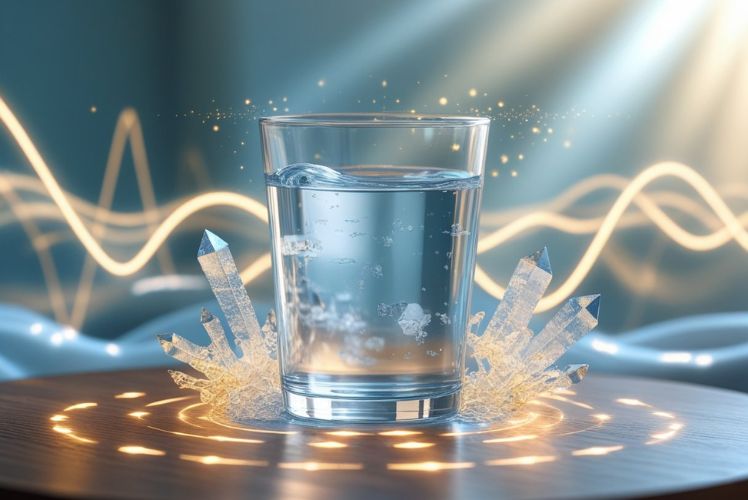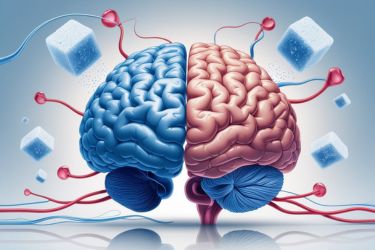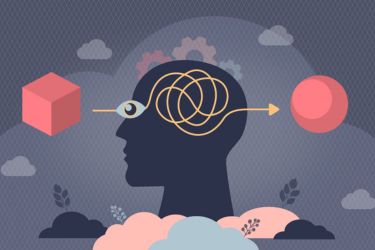Most of us know that water is essential to life, but have you ever wondered if water can actually respond to our thoughts, words, or emotions? The Emoto Water Technique comes from research by Dr Masaru Emoto, who believed that the structure of water can change based on emotional and environmental influences. This method suggests that positive or negative energy directed at water might create visible changes in the way its molecules form.

We've seen claims that water exposed to kind words or harmonious sounds develops beautiful structures, while harsh words or negative tones produce disordered patterns. Some experiments, like the ones explained in Masaru Emoto’s studies, have aimed to show how human intentions can impact water on a molecular level, capturing photographs of ice crystals to support these findings. You can read more about these claims in the Masaru Emoto Water Experiment.
While debate continues in the scientific community about these results, exploring the Emoto Water Technique invites us to think about the possible connection between our emotions, our environment, and the water we drink every day.
Key Takeaways
- The Emoto Water Technique explores how thoughts and emotions might influence water.
- Experiments and case studies use words, music, and intention directed at water samples.
- The topic raises questions about how our mindset could affect daily life and health.
Origins and Principles of the Emoto Water Technique

Masaru Emoto introduced an approach that connects human intention, emotion, and water. His ideas revolve around the possibility that water can store information and that our words or actions may influence the physical structure of water.
Background of Masaru Emoto
Masaru Emoto was a Japanese author and businessman who gained international attention in the late 1990s and early 2000s. He became known for his unconventional studies on water and consciousness. Emoto published popular books and gave talks worldwide, sharing his belief that water has unique properties related to energy and information.
His most influential book, “The Hidden Messages in Water,” presented photographs of water crystals exposed to various words, music, and intentions. Emoto claimed these crystals showed different structures based on the emotions or messages received. Although his work was widely referenced in self-help and spiritual circles, it has been criticised in scientific communities for lack of rigorous method and reproducibility. Academic reviews note that he is mainly known as a pseudoscientist and author, not a traditional researcher Masaru Emoto - Wikipedia.
Concept of Water Memory
The core of Emoto’s technique is the concept of water memory. This is the idea that water is able to “remember” or retain information from its environment beyond just chemical composition. Emoto believed that water could store the energy or vibration of words, music, and even written labels placed on bottles.
Although the idea of water memory draws some parallels to early homeopathy experiments, it is not part of accepted mainstream science. No solid scientific evidence supports the concept that water can store information in this way. The technique gained traction for its intriguing photographs of water crystals changing form under different conditions, which Emoto used as visual evidence for his ideas. However, most scientific reviews remain sceptical about these claims due to lack of reproducibility and clear mechanism.
Dr. Masaru Emoto’s Hypotheses
Dr. Emoto’s main hypothesis is that human consciousness can affect the molecular structure of water. He claimed positive emotions, such as love and gratitude, produce beautiful and symmetrical water crystals, while negative emotions, like hate or anger, create distorted or less pleasing shapes Masaru Emoto Water Experiment: Water, Thoughts and Emotions. Emoto believed these changes could be observed and photographed under a microscope.
His studies suggested that water exposed to kind words, positive speech, or classical music would form visually appealing patterns. In contrast, harsh language or negative environments led to jagged or broken crystals. The hypothesis attracted both curiosity and criticism. While many embraced the concept for its philosophical and inspirational appeal, scientists questioned the objectivity, controls, and methods used in his work. Emoto’s experiments remain a subject of debate, illustrating the divide between empirical science and alternative approaches to understanding water’s properties.
Methods and Experimental Procedures

To examine the Emoto water technique, we need careful methods that allow us to observe and record changes in water crystals. Using high quality photographic techniques, proper microscopes, and controlled freezing conditions is essential.
Photographic Techniques for Water Crystals
We use specialised photographic setups to capture images of water crystals after treatment. These photographs are taken quickly after freezing, using dark field or polarised light to highlight the tiny structures created in the ice.
The water is dropped onto slides as small droplets, which are then frozen at carefully controlled temperatures. Once frozen, we take multiple photos to document the unique shapes each crystal forms.
Lighting and lens settings are crucial during the photography. A consistent setup helps make sure differences between crystals are real and not caused by equipment changes. Dr Emoto's water experiments often include side-by-side photos to show differences in structure.
Role of Microscopes
We rely on high-powered microscopes to view water crystals at the required magnification. These microscopes allow us to observe the fine structure and symmetry of each crystal, distinguishing between hexagonal patterns and irregular forms.
Microscope settings must be standardised to avoid bias in results. Choices like magnification, focus, and lighting angle can all affect the appearance of the crystals. Consistency ensures we accurately compare samples exposed to different words, sounds, or emotions.
Microscopes are also important for capturing images before the ice starts to melt, which can quickly alter the crystal structure. This step requires both speed and precision.
Formation of Water Crystals
The process of crystal formation begins with pure water placed in clean containers and then exposed to a specific stimulus, such as a word or piece of music. We then drop small amounts onto petri dishes or glass slides.
These samples are frozen at a set temperature, allowing individual water crystals to form. Only some droplets will create visible crystals, so multiple samples are prepared and observed to find clear examples.
The appearance and symmetry of the water crystals are then photographed and analysed. Positive words or harmonious music are thought to promote more organised structures, according to reports from studies like the Emoto water experiments.
Sometimes, results are displayed in a table or grid to compare the number and quality of crystals formed after different exposures. This helps reveal any patterns in crystal structure linked to the tested variables.
Influences on Water: Thoughts, Words, and Sounds

Research suggests water may respond to different inputs including spoken words, emotions, and various types of sound. We can explore how gratitude, speech, and music might have an effect on the structure of water crystals.
Impact of Words and Gratitude
Dr Masaru Emoto claimed that positive words and expressions of gratitude could change the physical structure of water. By freezing water and then examining the ice crystals under a microscope, he found that water exposed to phrases like "thank you" formed regular, symmetrical shapes. In contrast, water exposed to negative words produced disordered crystal forms.
Some key findings are:
- Kind words: led to orderly, attractive crystals.
- Negative words: resulted in misshapen, uneven formations.
- Expression of gratitude: often caused the most visually appealing shapes.
We should note that while these experiments have been widely discussed, results remain controversial in the scientific community. Still, the idea that words and intentions such as gratitude could influence water's structure is popular in discussions about the mind-body connection. More on this can be found in descriptions of Emoto’s water experiments.
Effect of Music and Vibrations
Emoto also explored how music and different vibrations affect water’s structure. When samples were played pieces of classical music like Mozart or Beethoven, the resulting ice crystals often appeared balanced and symmetrical. In contrast, exposure to harsh or aggressive sounds led to irregular, fragmented patterns.
The process included:
- Playing water containers a variety of music genres.
- Examining ice crystals after exposure for signs of order or disorder.
- Comparing classical, folk, and heavy metal tracks.
Positive, gentle music often led to beautiful crystals, while chaotic sounds produced incomplete patterns. These experiments suggest vibrations from sound can have visible effects on water’s crystalline form, but these claims have not been fully accepted by scientists. Further explanation is available on The Hidden Messages of Water.
Specific Examples and Case Studies

These experiments involve exposing water to different types of music and observing changes to the ice crystals formed from the water. We see how various musical influences are believed to shape the structure of water, based on Masaru Emoto’s methods.
Beethoven and Mozart
When water samples are played classical music, like the works of Beethoven or Mozart, Emoto’s team reports that the resulting frozen crystals appear symmetrical and aesthetically pleasing.
For example, water "listening" to Mozart's symphonies is said to form detailed, star-like shapes. When Beethoven’s compositions are used, the crystals show similar symmetry and complexity. Photos published by Emoto show these crystals looking almost like snowflakes, which he claimed was proof of positive change.
Many of these observations are purely visual. The belief is that classical music’s harmony and gentle tones influence the water’s crystal structure. The process involves labelling water containers with composer names, playing music, freezing the water, and then photographing the crystals under a microscope. These details can be found in discussions of Emoto’s experiments with music and water crystals and emotional imprinting.
Heavy Metal Music
When heavy metal music is played to water samples, the resulting ice crystals are described as irregular and sometimes fragmented.
Emoto’s photos often show these crystals with rough or less-defined shapes. According to him, aggressive or loud music leads to crystals that lack symmetry or beauty. The difference is usually compared directly to those created by classical music, providing a contrast that draws attention to the potential impact music type has on water.
The process is the same: water is exposed to heavy metal music, frozen, and then observed microscopically. These results are highlighted in resources discussing the controversial nature of Emoto’s findings about music’s effect on water. We should note that critics argue there are issues with experiment controls and repeatability, but Emoto’s images and claims remain central to popular discussions on this topic.
Implications for Health and Human Life
Exploring Emoto’s ideas, we see connections suggested between water’s structure, our emotions, and effects on the human body. These topics involve health, energy, and our understanding of consciousness.
Potential Healing Effects
Masaru Emoto’s research proposes that positive words, thoughts, or even sounds may influence water and, in turn, our own well-being. Since our bodies are mostly water, his ideas suggest that our mood and intentions could affect our physical and mental health.
Experiments describe water exposed to words like “love” forming more symmetrical and aesthetic ice crystals. In contrast, water exposed to negative expressions grew less ordered shapes. Supporters point out that positive affirmations or environments may encourage better energy and promote healing, possibly by improving how water behaves inside us.
A number of practitioners include these concepts in holistic health routines, encouraging us to use intent, gratitude, and kindness during daily hydration. While these ideas are not proven in mainstream science, many people have added positive rituals when drinking water, believing it may foster better health outcomes. For more, see the overview of Masaru Emoto’s water experiments.
Molecular Changes in Water
Emoto claimed that human emotions and intentions could create measurable changes at the molecular level in water. When frozen, samples said to be treated with positive words formed clear, geometric crystals, while those exposed to negativity formed distorted, less structured patterns.
Some researchers question the reproducibility of these results, noting a need for stricter scientific controls. At present, conventional science recognises water’s sensitivity to its environment but remains skeptical about the idea that thoughts alone can shape crystal formation in a predictable way.
Despite this, the idea of water changing in response to external stimuli is compelling. Even minor differences in environment, temperature, or vibration can cause visible changes in water crystals. Journals in the holistic field continue to examine these molecular claims for possible connections to human health and well-being.
Connection to Consciousness and Emotions
Emoto’s work suggests a relationship between human consciousness, emotions, and water structure. Since water makes up much of the human body, this could mean our feelings and energy fields interact directly with the water in us.
He theorised that positive states—like love or gratitude—raise our frequency or vibration, potentially leading to improved health and harmony. Negative emotions, in theory, could have the opposite effect on our inner balance.
Some people use these concepts in meditation and mindfulness routines. Techniques might include speaking kindly to water before drinking or focusing on gratitude, aiming to boost energy and emotional health. For further insight, view how emotions influence water and its possible impacts on our consciousness.
Frequently Asked Questions
We explore what Masaru Emoto claimed about water and emotions, how his experiments were carried out, and what scientists say about his work. This section discusses findings, scientific methods, and the opinions from experts in the field.
What are the main findings of Masaru Emoto's water experiments?
Emoto claimed that water exposed to positive words and emotions would form more visually appealing crystals after freezing. Conversely, he said negative words and emotions led to unattractive, disordered crystals. These claims suggested a link between human consciousness and physical changes in water.
How does the process of water crystallisation relate to human emotions according to Emoto?
Emoto believed human thoughts and feelings could affect the structure of water. He stated that water absorbs the energy from its environment, including emotions and words, which influences how ice crystals form. Positive energy resulted in balanced, symmetrical crystals, according to his theory, while negative energy produced irregular shapes.
Can the results of the Emoto water experiments be reproduced scientifically?
The results of Emoto’s experiments have not been reliably reproduced by other scientists. The methods used have faced criticism for lacking proper controls and objective measurements. Most independent researchers have not been able to replicate his findings under controlled conditions. There is no credible scientific evidence supporting Emoto’s claims, as explained in this overview of the controversy.
Are there any peer-reviewed studies on the effects of emotions on water structure?
There are no peer-reviewed scientific studies that confirm Emoto’s claims about emotions changing water’s structure. Most of the research supporting Emoto’s ideas has not gone through the peer-review process. The mainstream scientific community considers his theories unproven and does not accept them based on available evidence.
What methods were used to document the changes in water crystals in Emoto's research?
Emoto’s team would expose water samples to words, music, or emotions, then freeze the samples. They used microscopes to photograph the resulting ice crystals. The process involved selecting the most representative crystals for public viewing, which led to criticism about potential bias in choosing the images.
How have Emoto's water experiment results been interpreted within the scientific community?
Most scientists view Emoto’s experiments as pseudoscience. Experts argue that his work does not meet scientific standards for experiment design or reproducibility and lacks rigorous evidence. For further discussion, the sceptical stance of many experts is summarised in this critical review of Emoto's research.





















